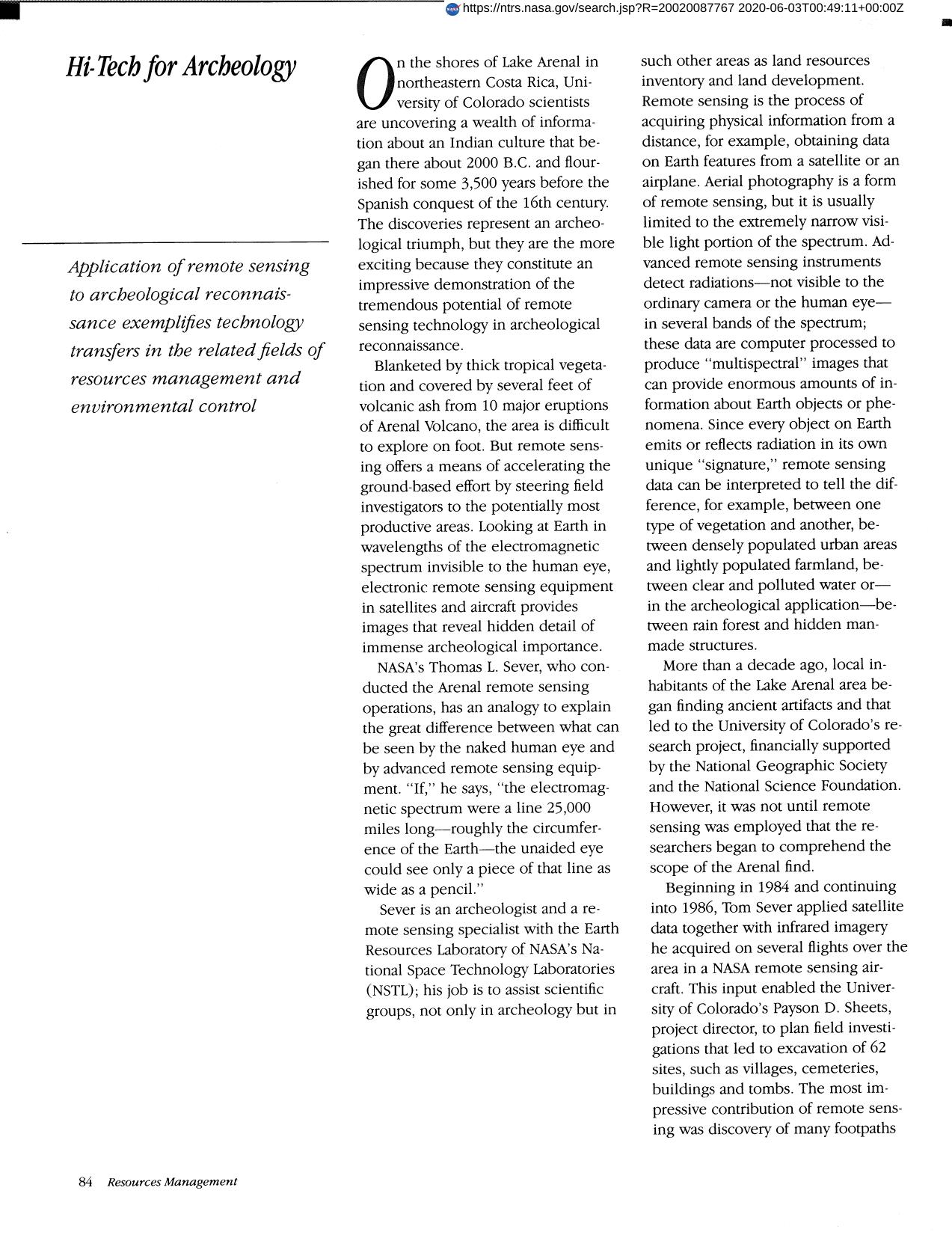
Hi-Tech for Archeology
Remote sensing is the process of acquiring physical information from a distance, obtaining data on Earth features from a satellite or an airplane. Advanced remote sensing instruments detect radiations not visible to the ordinary camera or the human eye in several bands of the spectrum. These data are computer processed to produce multispectral images that can provide enormous amounts of information about Earth objects or phenomena. Since every object on Earth emits or reflects radiation in its own unique signature, remote sensing data can be interpreted to tell the difference between one type of vegetation and another, between densely populated urban areas and lightly populated farmland, between clear and polluted water or in the archeological application between rain forest and hidden man made structures.
Full article: http://hdl.handle.net/hdl:2060/20020087767

Hi-Tech for Archeology

Hi-Tech for Archeology













